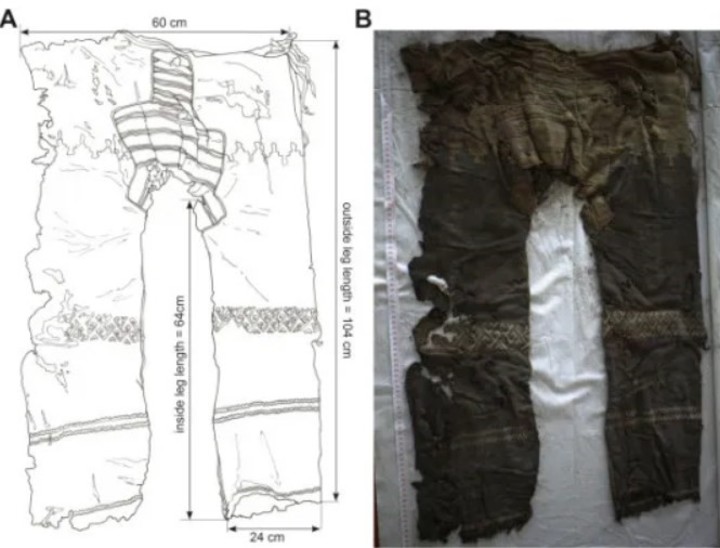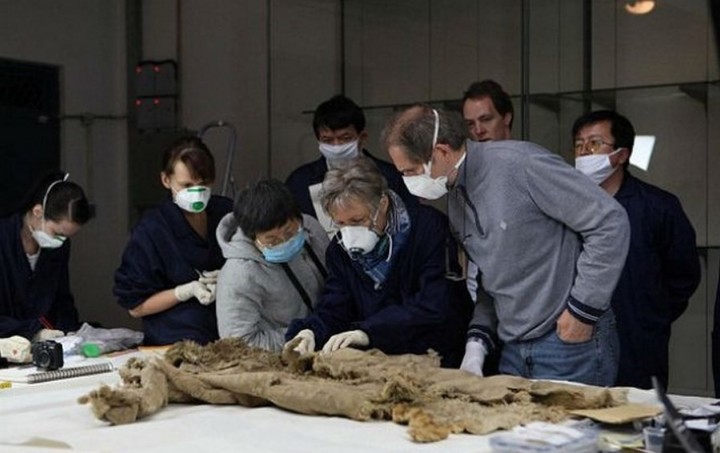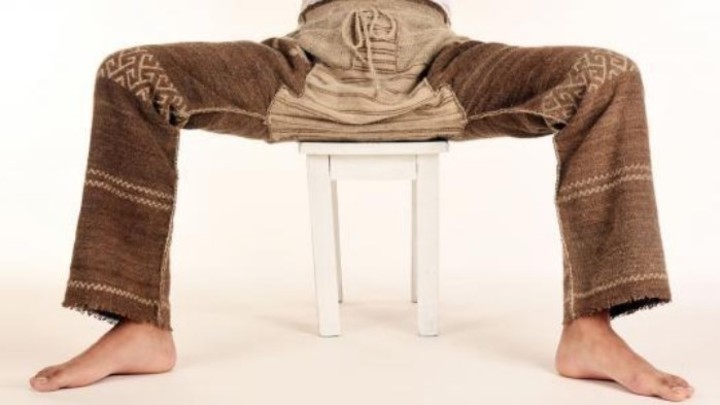The oldest known pants in the world were found in 2014 in the Tarim Basin, an important river in Central Asia located between the Tian Shan and Kunlun mountain ranges and close to the second largest sand dune desert in the world, the Taklamakan Desert. .
It was a garment from around 3,300 years ago , with a surprising modern design and a tight cut to the legs and hips.
 Made of wool, they were used especially for horse riding (Archaeological Research in Asia).
Made of wool, they were used especially for horse riding (Archaeological Research in Asia).Made of wool, they were used especially for horse riding, since what was common then among the nomadic tribes that occupied that part of the planet were skirts and capes.
The two pants found in a grave in the Yanghai cemetery, near the oasis city of Turpan, in the Xinjiang autonomous region, belonged to shepherds in their 40s.
They are 3,300 years old
Researchers from the German Archaeological Institute have analyzed the clothing in the laboratory and have discovered that these clothing completely changed prehistoric fashion through their skillful combination of weaving techniques and decorative patterns, as explained in an article published in the journal Archaeological Research in Asia. .
The shepherds and horsemen of the Tarim basin were pioneers creating a product that eventually spread throughout the Asian continent, according to archaeologists.
One of the skeletons, now known as Turfan Man, had an exceptional outfit. In addition to the pants , he wore a poncho tight at the waist, a pair of braided bands to hold the trouser legs below the knees, another pair to hold the soft leather boots at the ankles, and a woolen headband with four bronze discs. and two seashells.
At his side, a leather bridle, a horse bit, and a battle ax showed that he had been a mounted warrior.
 Today’s jeans and dress pants use the design and production principles of those ancient clothing (Archaeological Research in Asia).
Today’s jeans and dress pants use the design and production principles of those ancient clothing (Archaeological Research in Asia).The most special piece was, however, his pants, made up of three sewn pieces of wool, one for each leg and another for the crotch. Its design includes side slits, fastening chains at the waist and decorative motifs on the knees . Their reinforcement in the groin provided protection for long trips, although they must have been uncomfortable to walk.
Within a few hundred years, specialists say, several nomadic groups throughout Eurasia began to wear this type of clothing, coinciding with the appearance of armies that had a cavalry section. Even today’s jeans and dress pants use the design and production principles of those ancient garments .
Analysis of the garments from the Yanghai cemetery, on the Silk Road, revealed that several techniques were used. Much of the pants are a twill weave fabric, a great innovation in textile history because it achieves a durable, flexible and resistant wool product.
 Researchers at the German Archaeological Institute recreated the pants to understand the ins and outs of their production (Archaeological Research in Asia).
Researchers at the German Archaeological Institute recreated the pants to understand the ins and outs of their production (Archaeological Research in Asia).Weavers combined twill with other innovative methods and designs to create high-quality riding clothing. A tapestry weave was used on the knees to produce a thicker, more protective fabric. And, on the top edge, a third technique was used to create a thick strap with a buckle.

Another feature of these pants is that they included an unusual braiding system, in which two weft threads of different colors were twisted by hand and tied through warp threads, creating a decorative geometric pattern at the knees. The same interlacing method produced zigzag stripes on the ankles and calves.
That same interlocking pattern that decorates the Turfan Man’s pants appears on bronze vessels found in what is now China and also dating to about 3,300 years ago. These innovations coincide in time with the arrival to the region of shepherds from the western Eurasian grasslands riding horses that they domesticated more than 4,200 years ago.
The vanguard.






